Flat Bottom Bags: A Stable Solution for Packing and Transport
Flat bottom bags provide a rectangular bag shape with a flat, stable base for sitting upright. Unlike traditional tapered plastic bags, flat bottom bags offer unique benefits for packaging, storage, and transport. This comprehensive guide will introduce the advantages of flat bottom bags and help determine if this style is the right choice for your needs.
What Are Flat Bottom Bags?
Flat bottom bags have a distinctive rectangular shape rather than a triangular profile. The bags have several flat sides and a wide flat bottom that provides stability for standing upright. The bottom seam runs horizontally rather than angling to a point. This allows the filled bags to stand on shelves without support. These bags come in plastic, paper, or fabric materials. Sizes range from small retail products to large bulk bags.
Benefits of Using Flat Bottom Bags
Switching to flat bottom bag style offers these advantages over traditional tapered plastic bags:
- Stand Upright – The flat base provides a wide, stable footprint for standing unsupported.
- Stackable – Rectangular sides allow bags to stack neatly, saving space.
- Displayable – Bags stand on shelves for attractive front-facing product presentation.
- Space Efficient – Contents fill four corners fully without collapsing.
- Organized – Contents remain neatly positioned rather than slumping.
- Accessible – Wide openings and flat bottoms make contents easy to access.
- Versatile – Available in many sizes and materials to suit needs.
Applications for Flat Bottom Bags
The stable standing design suits a range of packaging uses:
- Retail – Ideal for displaying merchandise like clothing, toys, foods, etc.
- Storage – Stackable shape saves warehouse shelf space.
- Shipping – Sturdy support protects contents in transport.
- Institutional – Allows orderly storage of supplies.
- Industrial -Used to package powders, liquids, parts, etc.
- Consumer – Reusable grocery and storage bags for home use.
Materials Used for Flat Bottom Bags
Flat bottom bags come in a variety of materials to meet specific needs:
- Plastic – LDPE, HDPE, polypropylene. Waterproof and durable yet lightweight.
- Paper – Kraft paper, recyclable paper, tear-resistant paper. Eco-friendly alternative.
- Fabric – Canvas, burlap, nylon. Reusable, washable fabric.
- Foil – Aluminum lined bags for moisture and vapor barrier.
Common Types of Flat Bottom Bags
Gusseted Bags
Popular for retail uses. Side gussets provide depth while maintaining flat, stackable shape. Available with a variety of handles and closures.
Quad Seal Bags
No gussets allows full utilization of interior space. Used for storage and shipping. Often have carry handles.
Block Bottom Bags
Simple box-shaped bags provide maximized interior cubic space. Used for bulk transport.
Pinch Bottom Bags
Diagonal bottom seam creates a flat base. Used for foods, hardware, crafts, etc. Easy to load.
Customization Options
Standard flat bottom bags can get customized with:
- Printing – Promotional graphics, logos, labels, warnings, etc.
- Windows – Clear plastic panels for content viewing.
- Features – Handles, holes, valves, perforations, etc.
- Closures – Zippers, drawstrings, adhesive strips, etc.
- Coatings – FDA compliant food safe liners. Moisture barrier.
Design Tips for Flat Bottom Bags
- Choose appropriate thickness based on use, load, and contents.
- Select sizes to fully utilize interior space while allowing complete filling.
- Determine optimum shape. Height to width ratios impact stability.
- Specify wide, flat bottoms for freestanding ability. 2-3 inches wide recommended.
- Stress points at seams and handles may need reinforcement.
- Add gussets if extra depth for contents is needed.
FAQs About Flat Bottom Bags
Are flat bottom bags more expensive than regular bags?
Flat bottom bags often have minimal cost increase over traditional tapered bags. Extensive customization can increase prices.
What material is best for heavy items?
Thick, reinforced plastic bags are best for heavy contents. Consider features like double handles and reinforced seams.
How do you maximize stability with taller bags?
Wider, deeper bottoms provide more stability. Gussets improve stability on taller bags.
Can paper or fabric flat bottom bags hold much weight?
Paper and fabric have weight limits. Choose dense, reinforced materials for heavy objects. Plastic is strongest.
Do flat bottom bags require specialized equipment?
Most flat bottom bag styles run on standard bag manufacturing machines. Customized shapes may need special tooling.
What objects work best in a flat bottom bag?
Uniform stacks or blocks fit neatly into corners. Bulky or round items can also work well. Avoid tiny loose items.
Discover If Flat Bottom Bags Are Right For You
With their ability to stand upright and stack neatly, flat bottom bags offer unique advantages over traditional tapered bags for many uses. This introduction covers key benefits, types, custom options, and design tips to assess if a flat, rectangular bottom fits your packaging needs. With the right bag materials and specifications, flat bottom bags can provide an optimized packing and transport solution.





Leave A Comment